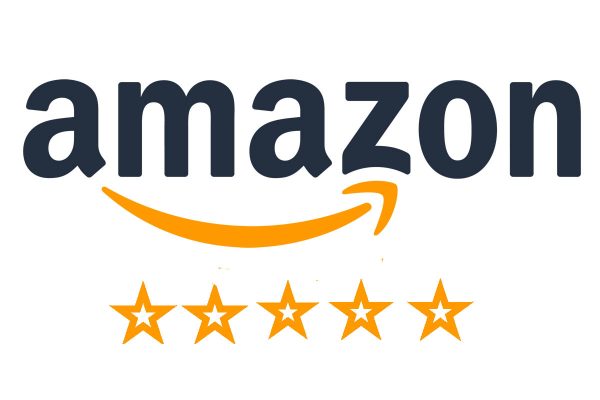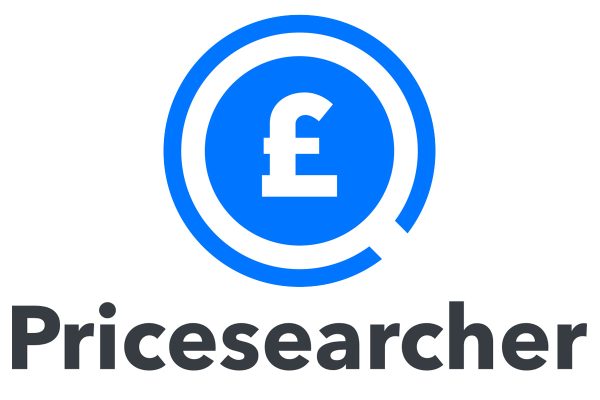Following the success of Mark Wright winning the Apprentice with his SEO based business “Climb-Online“, we wanted to know what good digital marketing really looks like.
 Christopher Rose is a serial entrepreneur currently involved in five micro businesses, one of which is an international digital marketing company called Rose Digital Marketing so we asked him what advice he’d give to Tamebay Readers and why the SEO service Mark Wright wants to sell you might be a bit outdated:
Christopher Rose is a serial entrepreneur currently involved in five micro businesses, one of which is an international digital marketing company called Rose Digital Marketing so we asked him what advice he’d give to Tamebay Readers and why the SEO service Mark Wright wants to sell you might be a bit outdated:
Digital Marketing – What Matters In 2015
As the late French journalist and novelist Jean-Baptiste Alphonse Karr so accurately observed back in the 19th Century, “the more things change, the more they stay the same” and this is equally as true in the current feverishly changing world of digital marketing as it was back in his day.
The perpetual challenge for any online business is how to deploy the available marketing budget in the most effective way to generate as much business as possible. The large, multi-national enterprises don’t have to concern themselves as intently with this, which makes it a little easier for SMEs to compete.
Many Tamebayers will be selling on the established marketplaces at eBay and/or Amazon and some of you may be testing others such as Etsy or Bonanza or even newer markets such as Rakuten and many of you will have taken it to the next level and built out your own e-commerce sites.
Regardless of how you sell, it’s the constant need for more traffic, fresh leads, or new customers, that remains the same for all online businesses, whether B2C or B2B, and for those just starting out as well as the more established. In this article I will address the core online marketing options an already busy business owner must at least consider and the potential benefits and costs – human and technical, as well as financial involved – as we enter 2015.
PPC Advertising
Despite increasing competition from sources as diverse as Amazon and Facebook, the most reliable and controllable traffic source remains paid search ads on Google and, to a lesser extent, Bing web properties.
Although both have increased in complexity over the last year, a trend certain to continue through 2015, the great benefits of PPC using Google Adwords or Bing Ads are the immediacy of the traffic, the control and positioning of the marketing message and the ability to measure the profitability of campaigns, things that simply can’t be achieved through most other types of online marketing.
These days PPC is arguably not suitable for all businesses, especially those operating on low or razor thin margins, but using properly calculated values for profit per sale or lifetime customer value in conjunction with conversion tracking means that effective, profitable ad campaigns are still within reach for many.
E-commerce businesses will often find even lower sales costs when PPC is combined with a Google Shopping campaign.
For this reason, my recommendation is that you make sure you are running a well-constructed and properly focussed and targeted ad campaign first and foremost. Done well it can be practically a licence to print money although done badly it is certainly going to burn your money.
Email Marketing
Clichés persist for a reason and my second favourite cliché is “It’s easier to sell to someone who’s already bought from you than someone who hasn’t”. Despite all the mountains of stuff written about everything from Adwords to Apps, it is still true that the most important asset of any business is its existing customer base and continuity marketing via email to your customers is almost certainly going to deliver a substantial proportion of the profits for any business.
I’d strongly recommend using a third party email service such as Aweber or Mailchimp, to name but two, as the costs are low and the ease and sophistication of use combined with the automatic spam law compliance built in make it well worth the modest expense.
The key to any good email campaign is to avoid simply bombarding your customers with sales messages. As with any marketing activity except search ads, email marketing is interruptive by nature and the best way to keep engagement high and unsubscribes low is to be interesting. My recommendation is to keep pure sales messages to no more than 40% to a maximum of 50% of all the content in your email newsletter.
Content Creation
Google’s flawed efforts to prevent or at least discourage any kinds of SEO have more or less forced businesses to learn about content creation and these days pretty much every business is or needs to be in the content creation game.
The underlying idea is that a business owner or, in a larger enterprise, a key member of staff, should be aiming to become an authority figure, a recognized expert in your field or, as my American friends and clients like to say, the go-to guy or girl.
The process of actual content creation, whether it be articles, images (from photos to infographics), slideshows, audio or video, is only half the game because every piece of content created also needs to be marketed in order to be seen.
This requires establishing a content creation and publishing system because sticking to a publication schedule is critical to the whole process. Nothing is more of a warning sign than a company blog or social media property that hasn’t been updated for weeks or eve months. You will therefore need to allocate a significant level of resources for the creation, distribution and marketing of this content in order for this process to succeed.
You’ll also need to create and maintain a significant number of social properties, from the previously mentioned sites to the likes of Google Plus and My Business and other sites relevant to your business, which could mean dozens or even hundreds of sites to register with and create useful profiles on.
It will take several months for these efforts to show significant results in terms of increased credibility and traffic.
The main upside is that content can be re-purposed and re-used in several different ways, from a company blog to a Facebook or LinkedIn page, as email newsletter content, shared on sites like Pinterest or Instagram or be mentioned in tweets on Twitter, ironically all in service of SEO, so you can at least get several bangs for your content creation buck.
SEO
According to Google’s guidelines, any kind of SEO activity these days is effectively black hat (even when it’s not) as they would prefer that everybody does nothing at all in order to rank their site more highly.
However, as they are judge, jury and executioner in terms of deciding how to rank the modest 10% of all websites they actually index and refuse to give any clear guidelines as to what their policies are (whilst ignoring those very policies for large corporations), the temptation to do something is usually too much for most businesses to ignore.
Unfortunately for business owners and their potential customers, this very deliberate ambiguity by the world’s largest search engine means that everybody, including most SEO providers, are working blindfolded and with one hand tied behind their back.
That said, there are two distinct aspects to SEO, on site optimization and off site optimization.
On site SEO is both the most technical and, if you know what you are doing, the most straightforward to address.
Registering your site with Google and Bing Webmaster Tools; setting up Analytics; linking GWT & GA with Google Adwords; checking you have an XML sitemap and submitting it; checking site load times and smartphone compatibility; and ensuring every page of your site has unique, relevant title and description meta tags are the bare minimum that any competent SEO should address. Fortunately, these are pretty much one off tasks that require some time and attention to detail but little by way of ongoing maintenance once completed.
Off site SEO is the most challenging aspect given Google’s general hostility to the practice and the large number of less than ethical firms all around the world providing SEO “services”. You may share my astonishment that Lord Sugar chose someone wanting to set up a new SEO agency as the winner of The Apprentice 2014.
There are two ways you can go if you want to enter this world. Focus on useful content creation only – and don’t forget content marketing – which will, in the context of an effective plan as detailed above, build “natural” backlinks gradually over time or accept that all SEO is unacceptable to Google but still something of a requirement these days and take some time to find a SEO company that will answer all your questions and not charge either an arm and a leg or a relative pittance. Either one is a red flag to my mind!
Social Media
The number of social media sites has exploded in the last year or two and it is now practically impossible and probably unnecessary for most businesses to cover all of them.
A question I am frequently asked is “How much budget do I need for online marketing?” This is a very understandable question but, as the world of online marketing is practically infinite, one to which the only reasonable answer is to work out what you can afford to spend on sustained marketing for a year and then allocate it appropriately.
This is particularly true of social media and its endless capacity to absorb everything you can throw at it. Facebook, Twitter, LinkedIn, Pinterest, Instagram, Slideshare, Google+ and dozens more will swallow up all the creative, financial and human resources of any business if you try to feed them all, so don’t do it.
A more constructive approach is to follow another of my favourite clichés, “Fish where the fish are”. Research your target market and find out which social sites they frequent most – there’s no point in targeting sites your potential customers don’t use.
You should aim to be a responsible, interesting and helpful member of appropriate communities of interest rather than endlessly promoting your products, which will just make people stop listening to you.
Social Media advertising is a different game of course and many businesses have started to find traction in these channels but, as with all interruptive marketing, a certain amount of trial and error is inevitably involved before finding what works best for your business in terms of generating likes, leads and ultimately customers.
In summary, 2015 will be like 2014 only more so; more technical, more focussed, more demanding and potentially more rewarding. It’s critical to be methodical and measure results carefully so you can have a better prospect of turning marketing effort into profits.
For most businesses I’d strongly recommend starting by testing Adwords, followed by email marketing, then content creation and social media, with a one off shot of on site SEO to make sure your site doesn’t have any technical barriers to ranking well but, as always, test and measure results and do what works for your business.










8 Responses
Excellent article which I found interesting and useful.
Many thanks
Hi Glenn,
Thanks for the kind words.
If anybody has any questions, feel free to post them here in the comments and I’ll happily reply.
Time is money and the analytics relating to optimisation of time suggest SEO and blogging are a time pit.
The lazy option is to accept that ebay and amazon fees represent good value and that is far better and more cost effective to use time to do nothing else other than to list items for sale on ebay, amazon (and a website if you have one) rather than to utilise any spare time for anything other than this. The more you have for sale the more likely it is that you are picked up by those that matter (ie paying customers).
Make ebay and amazon buyers your buyers. After all they want to make your buyers theirs!
Those who claim that ebay and amazon is not working for them may however need some help as they are clearly not doing something right. Those who are doing it right are not about to spill the beans and so the only hope may be third party SEO outfits.
One thought though.
If SEO and blogging was so effective then surely the experts would all be self made billionaires as a result of using their skills to sell their own stuff?
I find the “off site SEO” section to be one of the most interesting. Daily at Tamebay HQ, we get a ton of emails from SEO blaggers (normally from a gmail address) begging to have a post placed on Tamebay. That’s because they recognise that a Tamebay link has a certain authority. We delete them all.
However we’re always on the look out for quality guest posts and if you are a retailer who wants a back link to your website, or a supplier of ecommerce services that online retailers could be interested in, then all you need to do to get a back link is submit an interesting, informative and helpful article and we’ll happily publish it and help your SEO.
If off-site SEO is part of your plans for 2015, full details for guest post criteria are on the Tamebay Guest Post Policy page.
Generally speaking I agree with the combining these, and other, methods of digital marketing to form an integrated digital marketing strategy; but as a technical SEO consultant I can’t help but feel you’re slightly underplaying the importance of both on-site and off-site optimisation.
A “one off shot of on site SEO” may not suffice, at least not as a long term strategy. Organic search is continually evolving with features changing and/or new features rolling out frequently, features which may help to extend your organic search reach; therefore maintaining an adaptive on-site auditing/development strategy is essential. Canonical tags, pagination handling through rel=prev/next and structured data mark-up are just a few examples of techniques which didn’t exist a few years ago. Not to mention the continued evolution of Google’s Panda algorithm and the re-evaluation of content. A one-off tech audit may suffice in the short term, but long term you’ll need to be on the ball.
Furthermore if I have £1 for every time a client or developer had “accidentally” rolled back or wiped out previously implemented SEO techniques I’d be a rich man! So even if you do cross all the T’s and dot all the I’s it doesn’t mean your efforts won’t be inadvertently reversed!
And as for off-site optimisation, content creation and content marketing are definitely key methods of link acquisition (amongst the numerous other benefits!) which no savvy digital marketer would argue; however there are other strategies which can still play a vital role in search engine marketing.
Let’s not underplay the importance of a local search marketing strategy, especially for start-ups or SME trying to compete against the big players and especially in the light of Google Pigeon algorithm. Considerations such as local citations and NAP consistency for building a better, stronger, wider local search presence can form the basis of many search marketing campaigns. With the growth of location based and “in the moment” search gaining and maintaining a strong local search presence can be a crucial consideration.
Furthermore other forms of link acquisition, such as (dare I say it) guest posting, can also still provide benefit as long as it’s done for the right reasons in a professional, non-bulk, non-spammy manner. Guest posting has been around for years, it happens every day in all niches. It’s those people who try to manipulate the system that fail and suffer as a result.
Like I said for the most part I agree with your approach, but in my opinion SEO techniques play a vital role and should not be underestimated.
PS: As for Mark Wright he’s only just configured a holding page for the Climb Online website which is a pretty poor attempt at domain warming by anyone standards. It even fails to mention digital marketing or SEO. Anyone interested in the failings of Climb Online so far should read Dan Barkers post via https://barker.co.uk/apprentice.